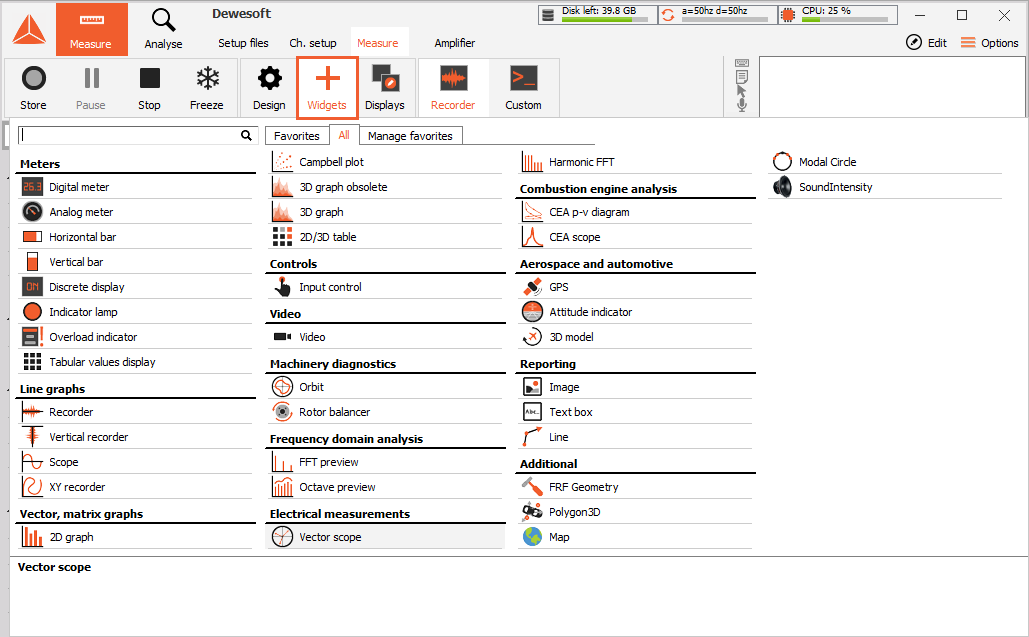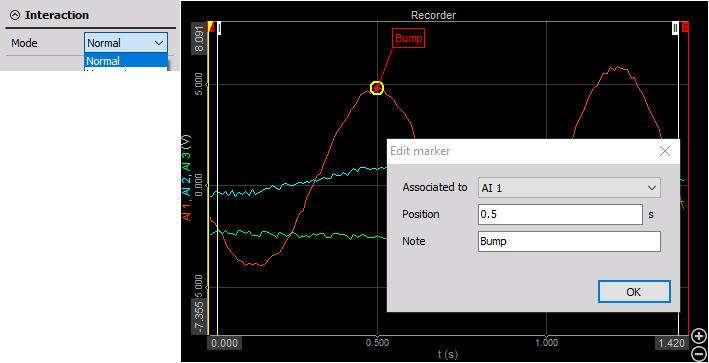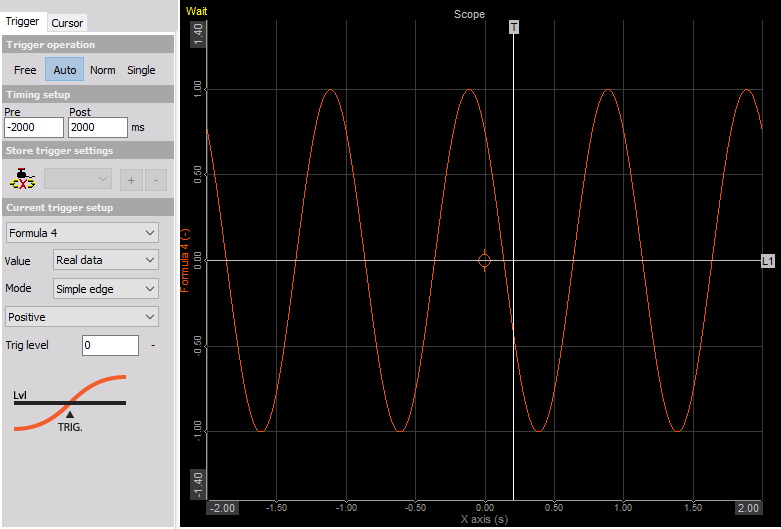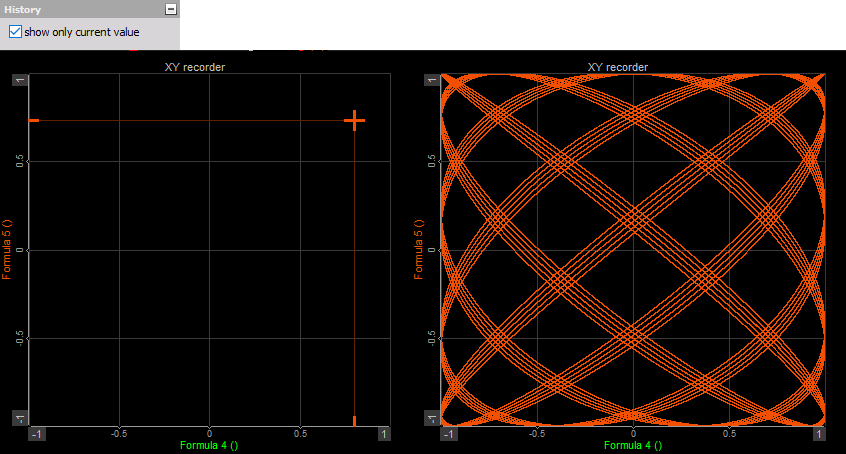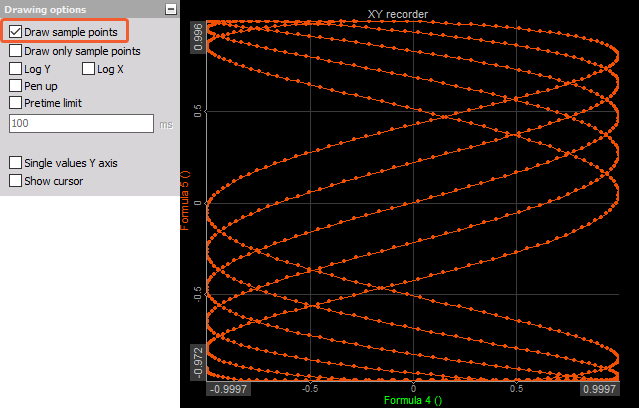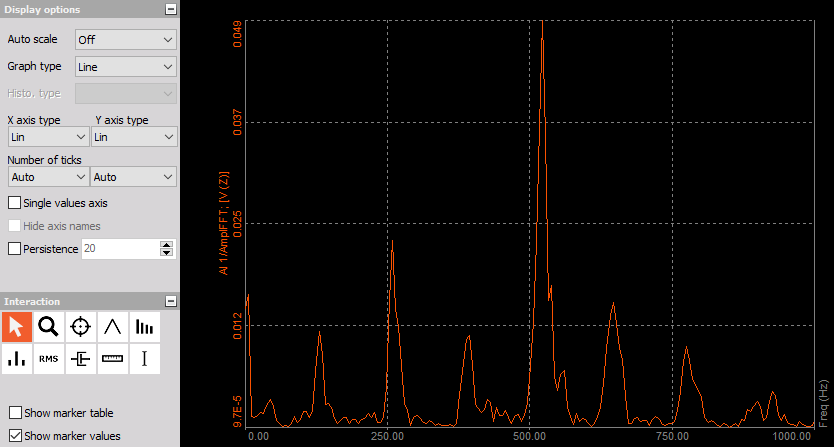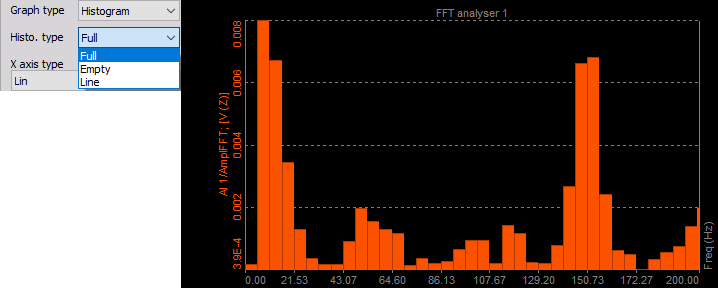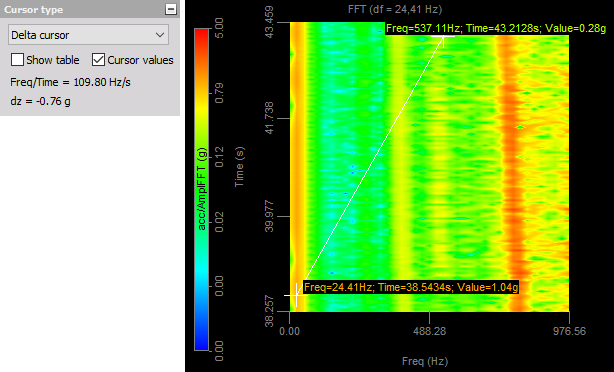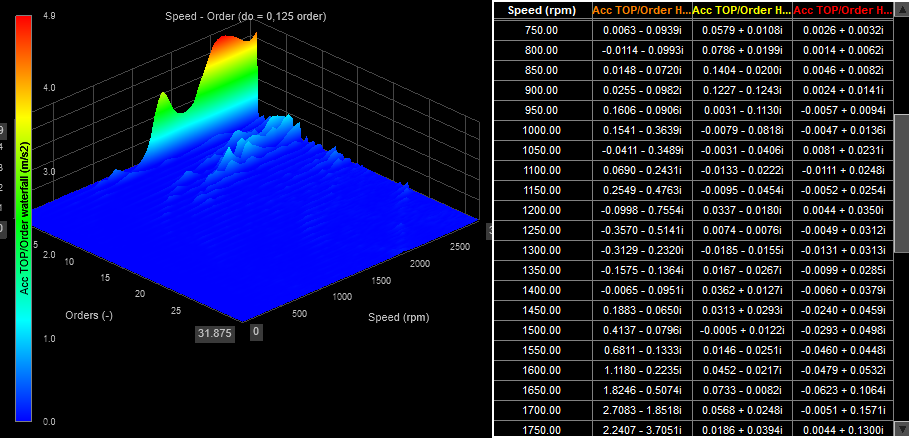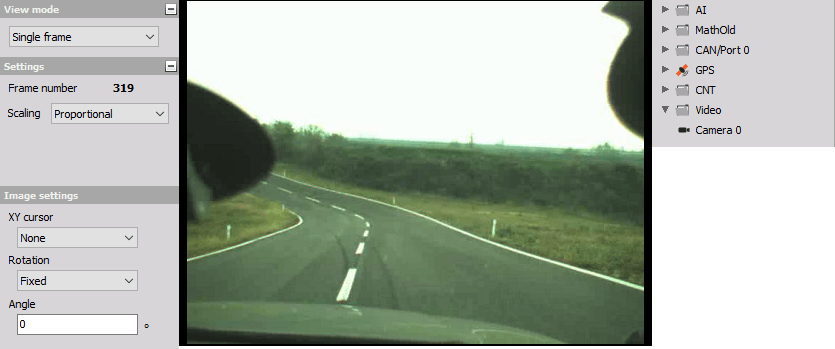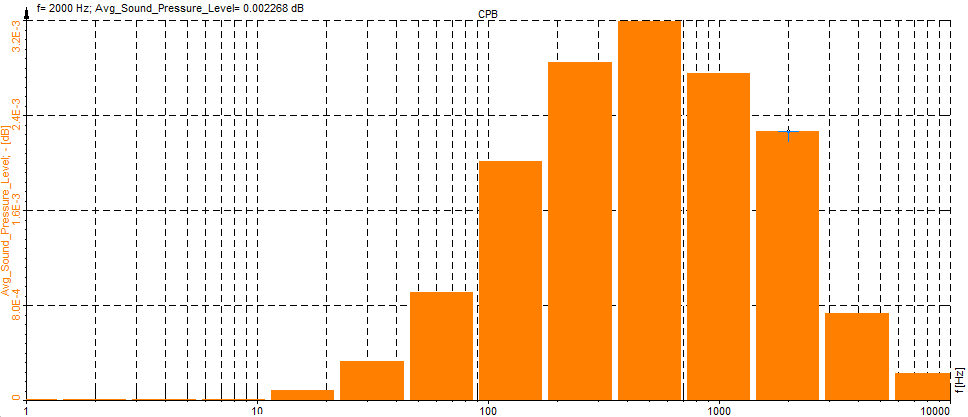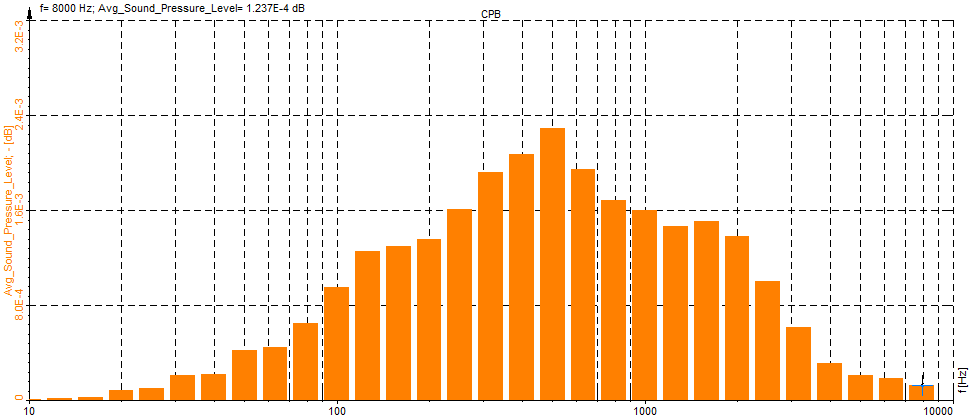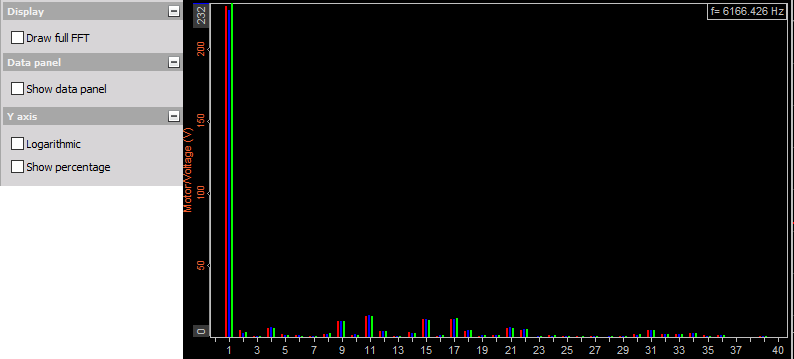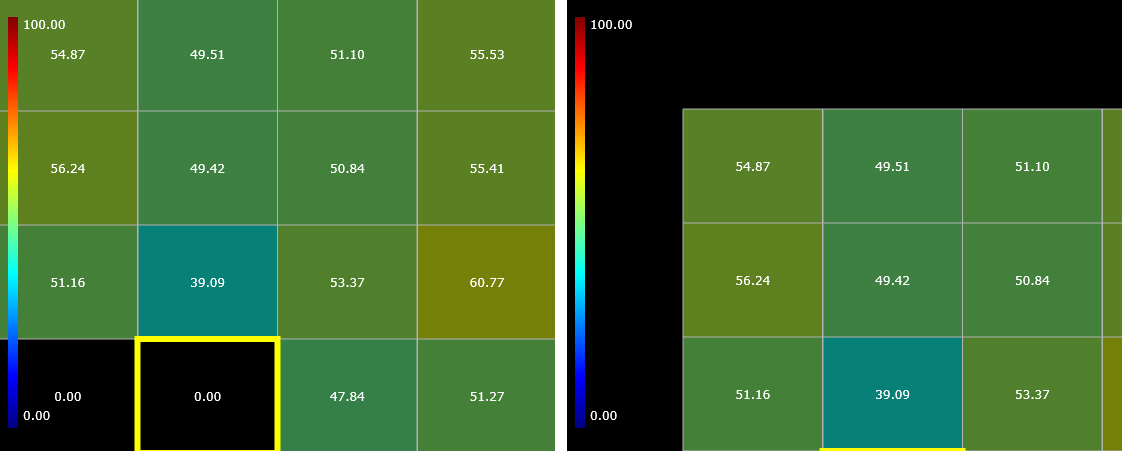The Scope instrument is used for displaying fast, short-time events. Like in a traditional scope you can define trigger conditions. Up to 16 inputs can be displayed at once in each graph.
 Image 52: Scope widget in Auto trigger operation
Image 52: Scope widget in Auto trigger operation
The Scope element in the overview offers all important information:
- channel name(s)
- unit(s)
- time information
- zoom functions...
When the scope is not triggering, the bar on the right side shows the current levels of the signal so we can optimize the trigger level according to the normal values (we can also use Auto trigger mode). When the trigger is lost for some seconds, data will be shown none triggered.
 Image 53: Bar on the right, which represents the none triggering time
Image 53: Bar on the right, which represents the none triggering timeRun mode Zoom (additional appearance setting)
At the top right above each graph in Norm or Arm Trigger mode, you maybe have already noticed a small icon. Pressing it enables/disables the zoom view during acquisition. Up to now, when you press the blue + and - buttons at the bottom right side of each graph, you also changed the memory depth used for the acquisition.
 Image 54: Loop sign
Image 54: Loop signIf we want to see the event now more detailed, just click the zoom icon. At the top of the graph, you will now see a scroll bar indicating the current displaying position within the whole acquired signal. Press the + button to zoom in (or - to zoom out).
 Image 55: Zoomed area in Scope
Image 55: Zoomed area in ScopeWhen you move the mouse over the scroll bar at the top, it will change its appearance to a "hand". When you press the left mouse button and move the mouse, you can change the current position and scroll through the whole acquired data of the current trigger shot.
The Scope instrument typical settings include three main groups:
- Trigger (Free run, Auto, Norm, Single)
- Cursor (cursor measurement to show the cursor readouts for each channel within the selected scope; with Reference curves possibility)
- Scale (to change displayed offset and scaling of signals)
- History (to display the trigger events in different ways history type, to select how many trigger events will be used, to browse through the trigger events, to export the acquired data)
1. Trigger settings
Dewesoft X knows four types of Trigger operations:
- FREE RUN (All values are displayed, no trigger active and there are no additional settings)
 Image 56: Free run option
Image 56: Free run option - AUTO (The auto-trigger displays values if the trigger condition is true; when there is no trigger within some time, it displays the current value) For this type of Trigger operation we can set:
- Timing setup
- Current trigger setup with:
- select the desired channel
- define the Value
- define the Mode - trigger type
- setup trigger condition for selected trigger type:
 Image 57: Auto modeMode
Image 57: Auto modeMode
- simple edge
- filtered edge
- window
- pulse width
- window and pulse width
- scope
- NORM (The normal trigger displays only values if the trigger condition is true)
For this type of Trigger, the operation can be set in the same setting as for Auto trigger.
When the Norm (or single) trigger is selected, another tab appears -> History.
 Image 58: Norm mode
Image 58: Norm mode - SINGLE (This function can be used to acquire single events)
After selecting Single button, this button changes to Rearm.
 Image 59: Single-mode
Image 59: Single-mode
Press it to get another single-shot event.
For this type of Trigger, the operation can be set in the same setting as for Auto trigger. When the Single (or Norm) trigger is selected, another tab appears - History.
2. The timing setup
 Image 60: Timing setup
Image 60: Timing setup
The Timing setup can be used to define the displayed Pre and Post trigger time in milliseconds.
HINT: Like the trigger level, the trigger position can be changed within the displayed time window by moving the white vertical line in the scope graph. Simply click on the line, keep the mouse button pressed and move the line to the desired position.
The time window can also be changed using the blue + and - buttons at the right bottom of each graph.
3. Current trigger setup
The trigger conditions for Auto, Norm, and Single data triggers are the same and work in the same way as described in Using a trigger to start and stop recording.
1. select the desired channel
First of all you have to select the desired channel out of the drop-down list. It displays all available channels.
 Image 61: Channel selector
Image 61: Channel selector 2. define the Value
Select the Real data, Average, or RMS from the drop-down list.
 Image 62: Define value
Image 62: Define value 3. define the Mode
Select the trigger type Simple edge, Filtered edge, Window, Pulse-Width, Window, and pulse-width or Slope from the drop-down list.
 Image 63: Define mode
Image 63: Define mode4. Setup other
These settings (e.g. Slope, Trigger level, Rearm level, Pulse time,...) depend on selected trigger type in Mode field.
HINT: The trigger level can also be changed by moving the white vertical line in the scope graph. Simply click on the line, keep mouse button pressed and move the line to the desired position.
3. Store trigger settings
This is a very nice function to define the storing options directly within the scope.
Any changes done here are automatically copied to the system trigger and vice versa. To activate this function press the Link store trigger button.

The drop-down list next to the button shows - if already available - existing triggers conditions or starts with a fresh entry T0.
 Image 64: Store trigger
Image 64: Store trigger The + button can be used to define additional conditions, which can be selected by the drop-down list and changed according to your requirements.
The - button can be used to delete selected additional conditions.
WARNING: As long as the Link storage trigger button is not pressed, the data is only displayed - not stored!
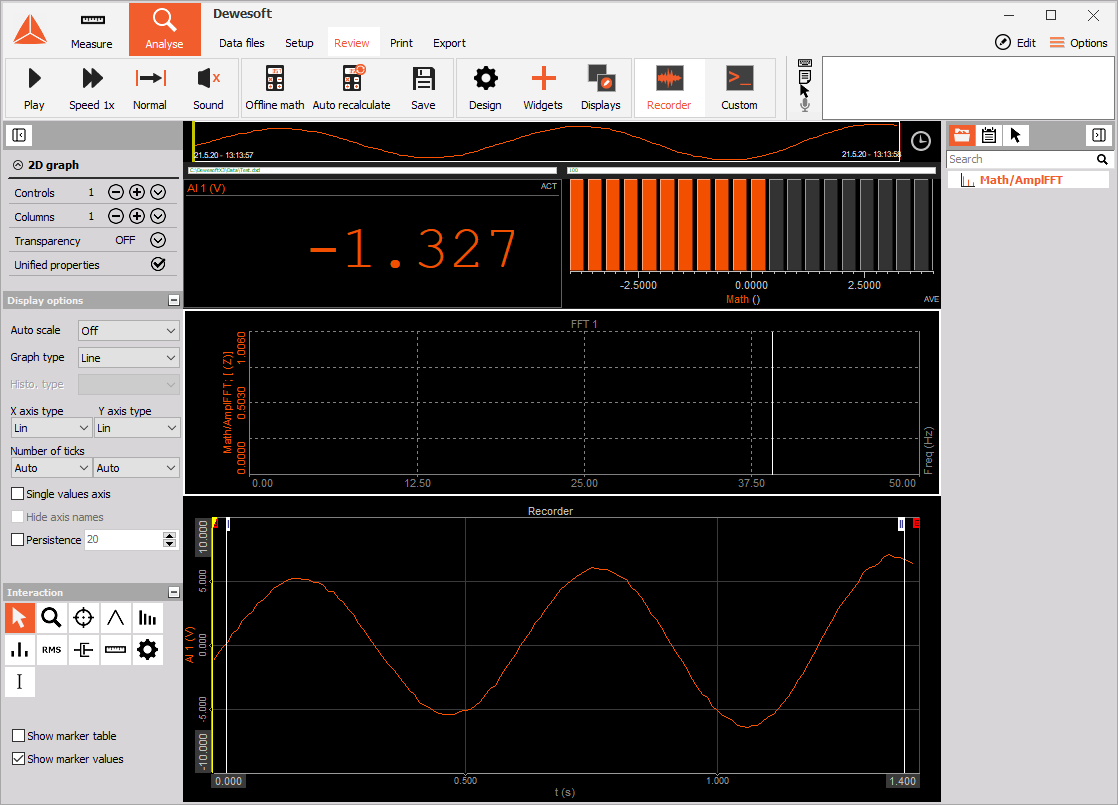 Image1: Typical display widgets
Image1: Typical display widgets


